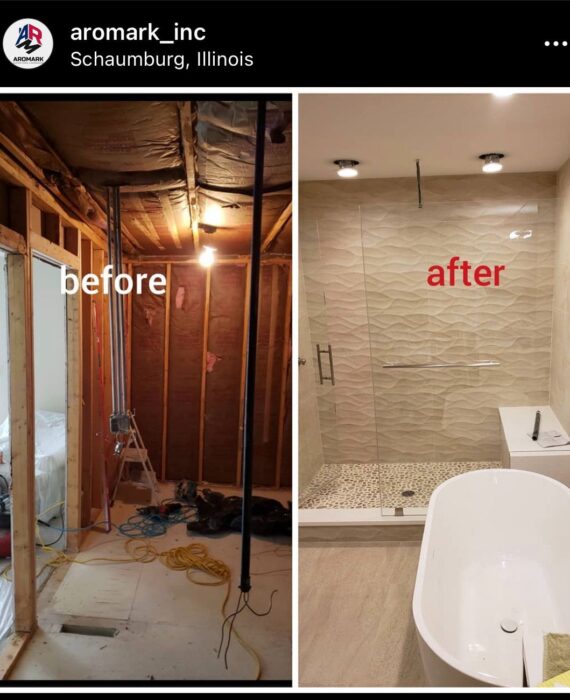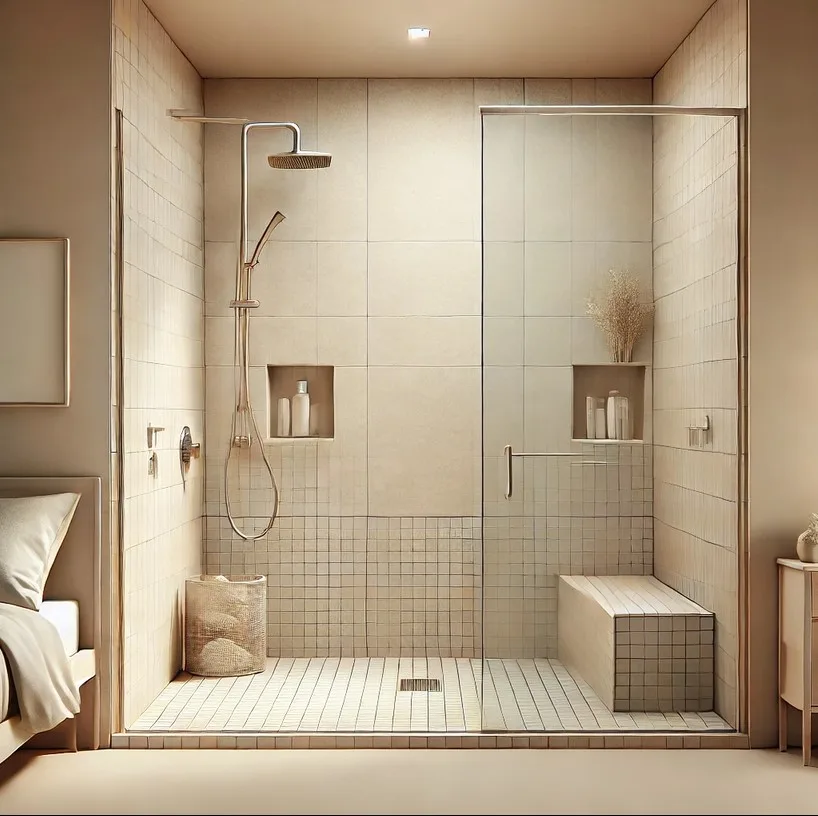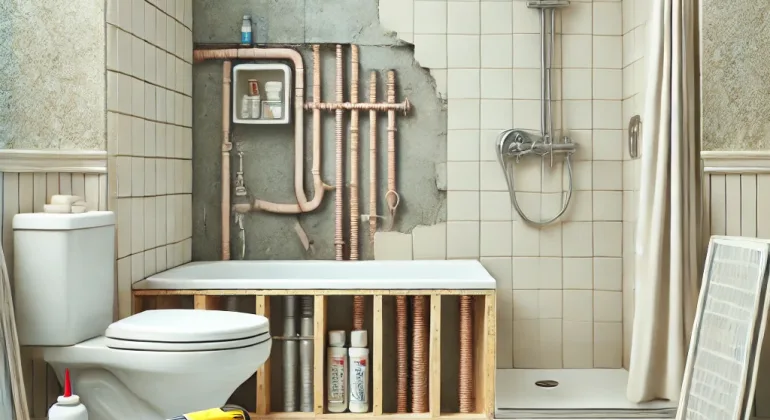Converting a bathtub to a walk-in shower is more than just a cosmetic upgrade—it’s a functional improvement that requires careful planning and attention to detail. If you’re considering a bath tub to shower conversion, understanding the technical aspects of the process will help you make informed decisions and avoid unexpected surprises along the way.
In this guide, we’ll break down the essential components of the conversion process, covering everything from plumbing to materials and costs, so you know exactly what to expect.
Key Considerations Before You Start
Before you dive into the project, it’s essential to assess the current layout of your bathroom and identify any potential challenges. Here are the main factors to keep in mind:
1. Plumbing Adjustments
The most critical part of the conversion is the plumbing. When replacing a bathtub with a walk-in shower, the drain position typically needs to be moved. Most bathtubs have a smaller, centralized drain located at one end, while walk-in showers require a larger drain that’s often centered or aligned with the new shower design.
- Drain Size: The standard drain size for a tub is 1.5 inches, while showers require a 2-inch drain to comply with building codes. This means reworking the drain is necessary to meet these specifications.
- Waterproofing: Proper waterproofing is crucial to prevent water damage. This involves installing a waterproof membrane beneath the shower floor and walls.
2. Shower Pan Installation
One of the most significant technical steps in the conversion process is installing the shower pan. This is the base of your shower, and it needs to be sloped properly to allow water to drain efficiently.
- Pre-fabricated vs. Custom: Pre-fabricated pans are quicker to install but may limit your design choices. Custom pans can be built on-site, giving you more flexibility with size and layout.
- Slope Requirements: The floor must have a slope of at least 1/4 inch per foot toward the drain to ensure that water flows correctly without pooling.
3. Framing and Structural Considerations
In some cases, structural modifications may be necessary, especially if you’re converting a large tub into a more expansive shower. Depending on the scope of the project, walls may need to be reframed, and load-bearing walls should be carefully evaluated.
- Wall Removal: If you’re converting a tub into a shower to create a more open space, removing or adjusting walls may be required. This can impact the framing and possibly electrical or plumbing lines within the walls.

Material Selection: What to Use?
Choosing the right materials for your bathroom shower conversion not only impacts the overall look but also ensures longevity and ease of maintenance. Here’s a breakdown of the key materials involved:
1. Shower Walls
When converting a tub to a shower, you’ll need to choose between several options for your walls:
- Tile: Tile is the most popular option due to its durability and design flexibility. Porcelain and ceramic tiles are commonly used, but they must be installed with waterproofing behind them to prevent leaks.
- Acrylic Panels: Acrylic is a cost-effective and low-maintenance option. These panels are easy to install and clean but offer fewer design choices compared to tile.
2. Shower Doors
The type of door you select for your new shower impacts both functionality and aesthetics. There are two primary types:
- Sliding Doors: Ideal for smaller bathrooms, sliding doors are efficient and don’t take up extra space.
Hinged Doors: For a more modern look, hinged or pivot doors offer a cleaner, frameless design but require clearance space to open.
3. Fixtures and Finishes
The fixtures you choose for your new shower—showerheads, handles, and valves—should align with both your design vision and practical needs.
- Showerhead Types: Rainfall showerheads provide a luxurious experience, but a handheld showerhead might be more practical for everyday use.
- Valve Placement: It’s essential to place the valve in a location that allows easy access without having to step into the shower to turn on the water.

Understanding the Cost to Convert Bathtub Into Shower
The cost to convert a bathtub into a shower can vary widely, depending on several factors, including the scope of the work, materials used, and whether plumbing adjustments are necessary.
Here’s a breakdown of the typical expenses:
- Labor Costs: Expect to pay between $1,000 to $4,000 for labor, depending on the complexity of the project. This includes demolition, plumbing, and installation.
- Materials: Shower pans, tiles, glass doors, and fixtures can add up. Material costs usually range between $500 and $4,000, depending on the quality and type of materials chosen.
- Permits: Depending on where you live, you may need permits to undertake a tub-to-shower conversion. Be sure to check with your local building department for specific requirements.
In total, most homeowners spend between $2,000 and $8,000 for a shower conversion, with custom projects potentially costing more.
Timeframe: How Long Does It Take to Convert a Tub Into a Shower?
A standard bathtub to shower conversion usually takes between 3 to 5 days, but this can vary depending on the complexity of the project. Here’s a typical timeline:
- Day 1-2: Demolition and removal of the old tub and tiles.
- Day 3: Plumbing adjustments and installation of the new drain and shower pan.
- Day 4: Installation of shower walls (whether tile or panels) and waterproofing.
- Day 5: Finishing touches, including grout, fixtures, and glass doors.
Keep in mind that if custom tile work or additional plumbing work is required, the project could extend to 7-10 days.
Things to Watch Out for During a Tub-to-Shower Conversion
While the process may seem straightforward, there are a few common pitfalls that can occur during a shower conversion. Make sure your contractor takes these into account:
1. Improper Slope
As mentioned earlier, the slope of the shower pan is critical. Without the correct incline, water won’t drain efficiently, which could lead to leaks and water damage over time.
2. Inadequate Waterproofing
Skipping or improperly installing waterproofing behind tiles or panels is one of the most common mistakes in shower conversions. Always ensure a waterproof membrane is used behind your walls and on the floor.
3. Ventilation Issues
Bathrooms without proper ventilation can develop mold and mildew over time. Consider upgrading your bathroom’s ventilation system if it’s inadequate, especially after installing a new shower.
Is a Tub-to-Shower Conversion Right for You?
The decision to replace a tub shower with a shower should consider not only your personal preferences but also the technical aspects of your bathroom layout. Some homes may face more significant challenges due to older plumbing, small spaces, or structural restrictions.
If you’re ready to move forward with your conversion, working with experienced professionals who understand the technical nuances is essential for a successful project.
Conclusion: Ready to Convert Your Tub to a Shower?
A bath tub to shower conversion is a practical upgrade that adds both functionality and value to your home. By understanding the technical details and working with a trusted contractor, you can ensure a smooth transition from a tub to a modern, walk-in shower.
If you’re ready to start your project, contact us today to discuss your options, get a quote, and begin transforming your bathroom!


